What are the Sacraments?
The Sacraments, which includes how we worship, “are efficacious signs of grace, instituted by Christ and entrusted to the Church, by which divine life is dispensed to us.” (CCC 1131) This means that they are simply visible, physical signs instituted by Jesus to give Gods inward and invisible grace to us. By receiving the Sacraments and opening ourselves to God’s grace, we are better able to live the Christian life in order to get to heaven. These Sacraments are meant to touch our senses and touch all of the stages of our lives; through sight, touch, taste, smell, and hearing, we are able to experience the presence of a living God and feel his saving grace. (CCC 1210) While on earth, Jesus instituted the following seven Sacraments:
Baptism
Through the waters of Baptism, Greek baptizein meaning to ‘immerse’, and the power of the Holy Spirit, we are cleansed of original sin and are born into a new life in Jesus Christ. (CCC 1214-1216, 1275-1277)
The physical signs of Baptism are the pouring or immersion of water and the words, “I baptize you in the name of the Father, and of the Son, and of the Holy Spirit.”
Some Biblical References for Baptism are Matthew 3:16, 28:19; Mark 1:8, 16:16; John 3:5; Acts 1:4-5, 2:38, 8:16, 8:36-38, 11:16, 22:16; Romans 6:3-4; 1 Corinthians 12:13; Ephesians 5:25-26; Colossians 2:12; and 1 Peter 3:20-21.
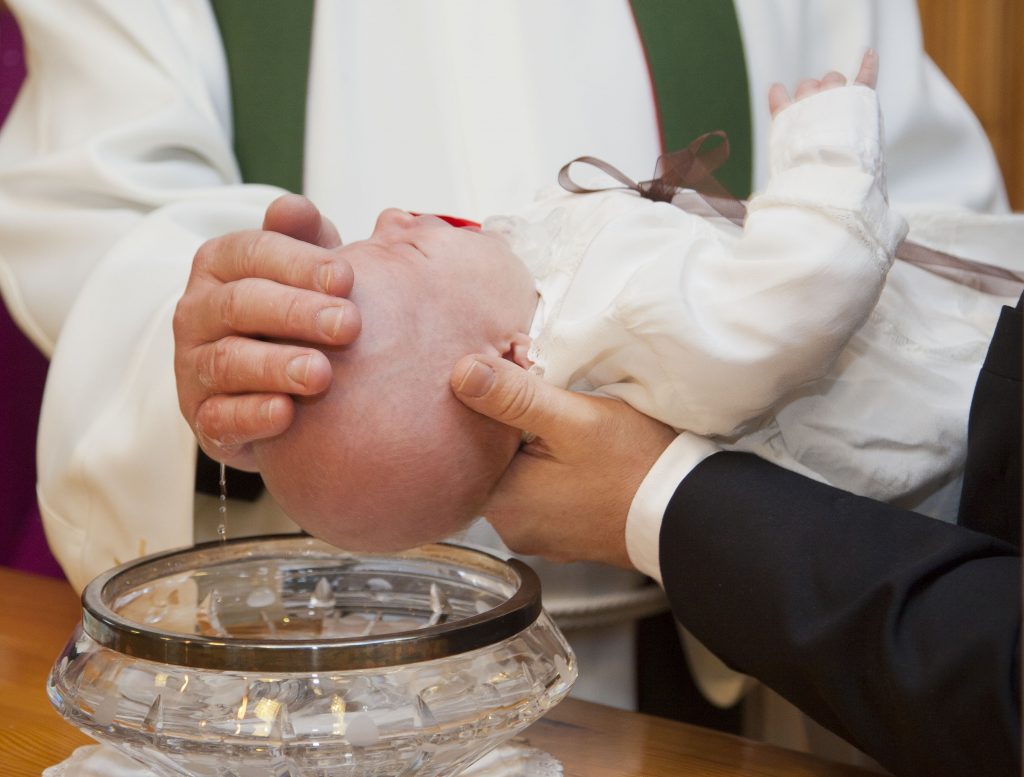
“Every soul that is born into flesh is soiled by the filth of wickedness and sin. . . . In the Church, baptism is given for the remission of sins, and, according to the usage of the Church, baptism is given even to infants. If there were nothing in infants which required the remission of sins and nothing in them pertinent to forgiveness, the grace of baptism would seem superfluous” – Origen, Homilies on Leviticus 8:3
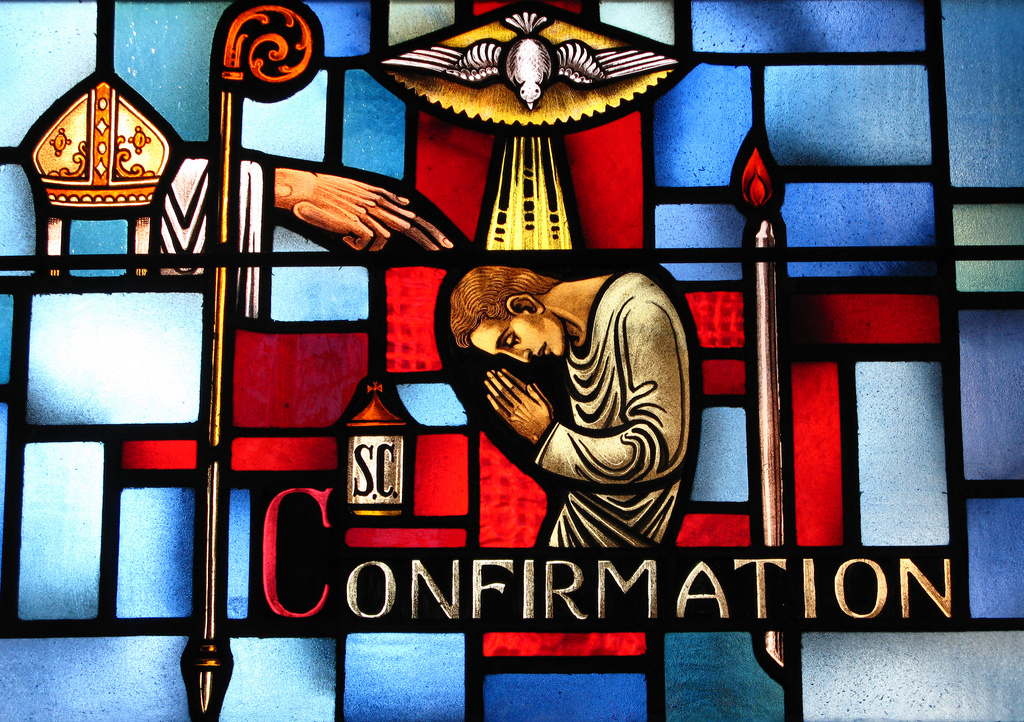
Confirmation
This Sacrament is received by those baptized to receive the fullness of the Spirit in order to bear witness to the truth of Christ. (CCC 1315-1321)
The physical signs of Confirmation are the laying of hands, anointing with chrism oil, and the words, “Be sealed with the Gift of the Holy Spirit.”
Some Biblical references for Confirmation are John 14:16; Acts 8:14-17; 19:3-6; and Hebrews 6:2
“Having been baptized into Christ, and put on Christ, you have been made conformable to the Son of God… while thy body is anointed with the visible ointment, thy soul is sanctified by the Holy and life giving Spirit. – Saint Cyril of Jerusalem, Mystagogical Catecheses 3.1
Eucharist
“The Eucharist is the source and summit of the Christian life.” (CCC 1324) The Eucharist is the Sacrament in which the substance of bread and wine is changed entirely to become the body, blood, soul, and divinity of Jesus Christ. This change of substance to the Body and Blood of Christ but with the appearance of bread and wine is called transubstantiation. Through receiving the Eucharist, we increase our union with God, since Christ is fully present in the Blessed Sacrament. (CCC 1376, Council of Trent (1551))
The physical signs of the Eucharist are the bread and wine, and the words of institution, “This is my body… This is my blood…”
Biblical references for the Eucharist are Matthew 26: 26-29; Luke 24:35; John 6:32-59; Acts 2:42; and 1 Corinthians 11:24-27.
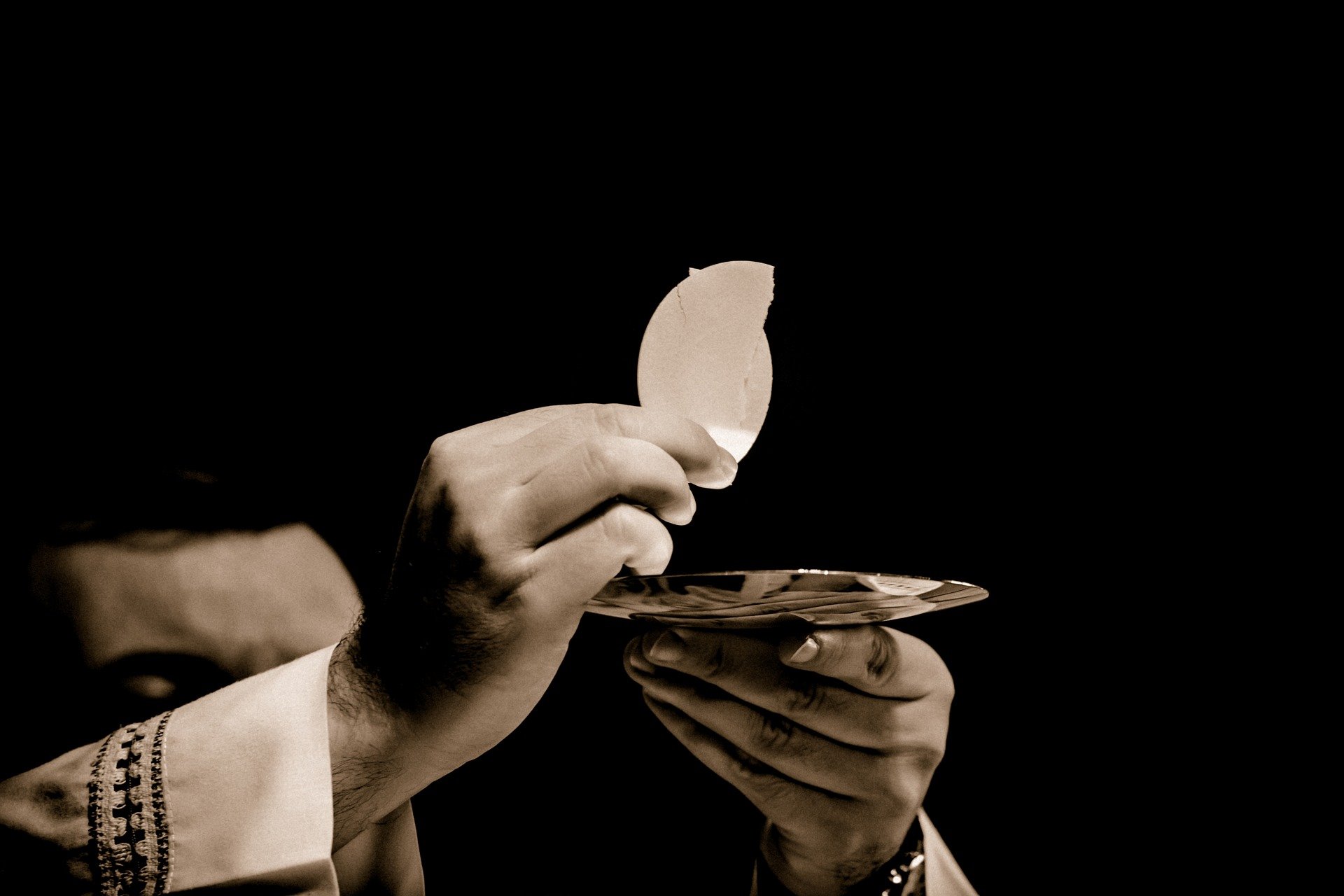
“It is not man that causes the things offered to become the Body and Blood of Christ, but he who was crucified for us, Christ himself. The priest, in the role of Christ, pronounces these words, but their power and grace are God’s. This is my body, he says. This word transforms the things offered.” – Saint John Chrysostom, De proditione Judae 1:6: PG 49
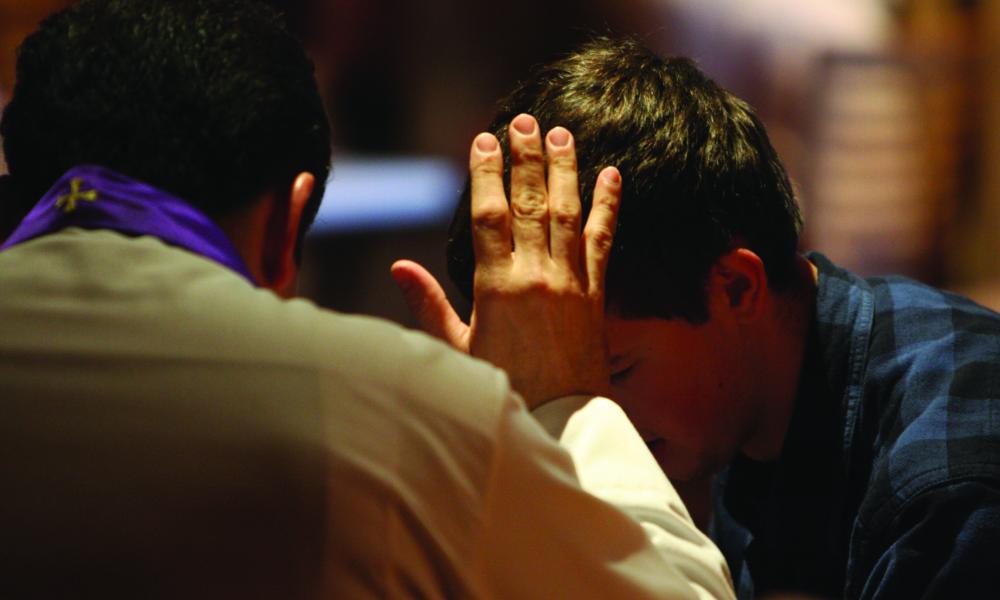
Reconciliation
Also called Penance or Confession, Reconciliation is where the sins we have committed after Baptism are confessed and forgiven by Christ through a priest. We confess our sins to a priest because Christ gave his Apostles the authority to forgive and retain sins. Our sins wound our relationship with God, and through Confession we are able to turn our hearts back towards God, receive His infinite mercy, and continue our journey to heaven. Reconciliation is the ordinary means of forgiving grave sins. (CCC 1485-1497)
The physical sign of Reconciliation are the words “I absolve you from your sins in the name of the Father, and of the Son, and of the Holy Spirit. Amen.”
Biblical references for Reconciliation are Luke 7:36-50; Matthew 16:19; and John 20:21-23.
“Confess your sins in church, and do not go up to your prayer with an evil conscience. This is the way of life. . . . On the Lord’s Day gather together, break bread, and give thanks, after confessing your transgressions so that your sacrifice may be pure” The Didache 4:14, 14:1
Anointing of the Sick
For those who are suffering from grave illness and may be close to death, this Sacrament, through the anointing of oil, imparts spiritual strength and physical healing. (CCC 1526-1532)
The physical signs of Anointing of the Sick are the anointing of oil on the head and hands, and the words, “Through this holy anointing may the Lord in his love and mercy help you with the grace of the Holy Spirit. May the Lord, who frees you from sin, save you and raise you up.”
Biblical references for Anointing of the Sick are James 5:13-15, Mathew 8:1-4
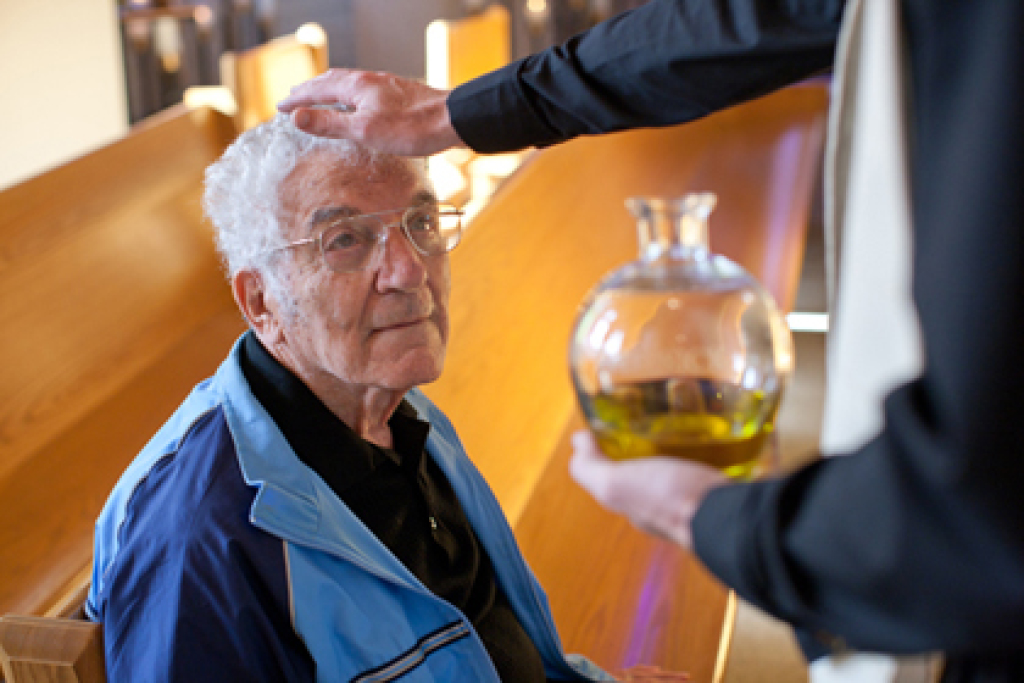
“Our priests have received the power not of treating with the leprosy of the body, but with spiritual uncleanness; not of declaring cleansed, but of actually cleansing. . . . Priests accomplish this not only by teaching and admonishing, but also by the help of prayer. Not only at the time of our regeneration [in baptism], but even afterward, they have the authority to forgive sins: ‘Is there anyone among you sick? Let him call in the priests of the church, and let them pray over him, anointing him with oil in the name of the Lord. And the prayer of faith shall save the sick man, and the Lord shall raise him up, and if he has committed sins, he shall be forgiven’” Saint John Chrysostom, On the Priesthood 3:6:190
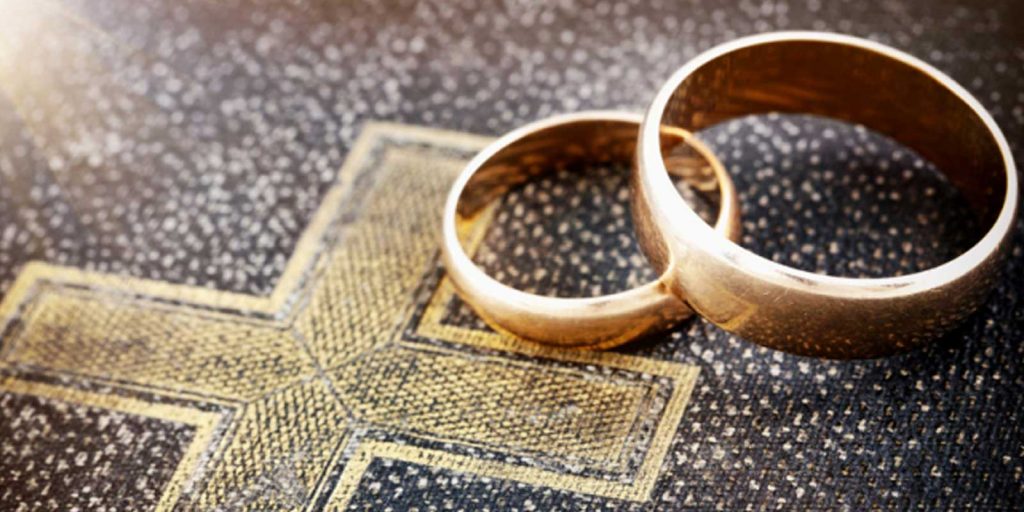
Marriage
This Sacrament is where the love between a man and woman become one. This covenant, where two form an intimate communion as one, signifies the covenant of Christ and the Church. Marriage perfects the love of each spouse and is ordered towards the unity of spouses and the new creation of children. (CCC 1659-1663)
The physical signs of Marriage are mutual consent and the exchange of vows.
Biblical references to Marriage are John 2:1-11; Matthew 19:10-11; and Ephesians 5:31-32.
“How beautiful, then, the marriage of two Christians, two who are one in hope, one in desire, one in the way of life they follow, one in the religion they practice…Side by side they face difficulties and persecution, share their consolations. They have no secrets from one another, they never shun each other’s company; they never bring sorrow to each other’s hearts… Hearing and seeing this, Christ rejoices. To such as these He gives His peace. Where there are two together, there also He is present, and where He is, there evil is not.” Tertullian, Ad Uxorem 2:8
Holy Orders
The Sacrament of Holy Orders is where baptized men are ordained and receive the power and grace to serve the Church. Bishops confer the Sacrament in three degrees, deacon, priest, and bishop. (CCC 1590 – 1600)
The physical signs of Holy Orders is the laying of hands by the bishop and the prayer of consecration. A second physical sign is anointing with Sacred Chrism that is only done during the ordination of priests and bishops.
Biblical reference for Holy Orders are 1 Timothy 3:8-9; Hebrews 7-10; Acts 6:3-6, 14:23; and Titus 1:7-9.
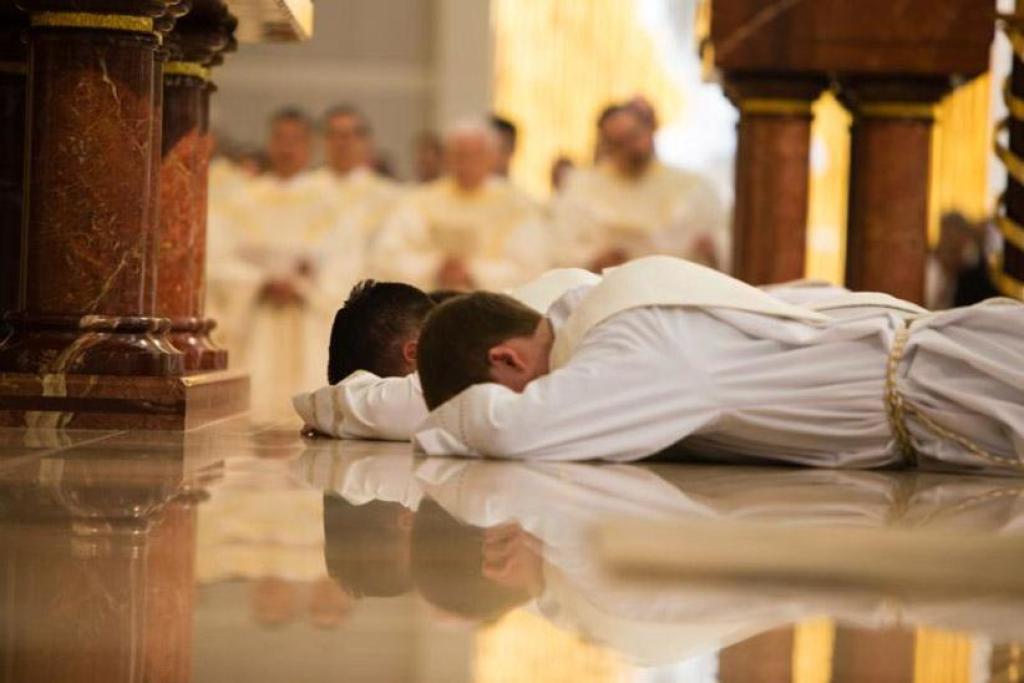
“Take care, therefore, to be confirmed in the decrees of the Lord and of the apostles, in order that in everything you do, you may prosper in body and in soul, in faith and in love, in Son and in Father and in Spirit, in beginning and in end, together with your most reverend bishop; and with that fittingly woven spiritual crown, the presbytery; and with the deacons, men of God. Be subject to the bishop and to one another as Jesus Christ was subject to the Father, and the apostles were subject to Christ and to the Father; so that there may be unity in both body and spirit” – Saint Ignatius of Antioch, Letter to the Magnesians, 13:1–2
What is the Mass?
Holy Mass is the central act of worship in the Catholic Church and is the most important celebration. We go to Mass in order to encounter a living God, through His Word and through His Body and Blood. Through this encounter, we receive the gift of grace to strengthen our life in Christ. Mass comes from the final blessing in Latin, ‘Ite missa es’, meaning “to send forth”. Just as Christ sends His disciples out into the world to spread the Good News, we must go out too. The order of the Mass follows four parts, or rites, which include the Introductory Rite, Liturgy of the Word, Liturgy of the Eucharist, and Concluding Rite. (CCC 1324-1419)
Introductory Rite
Mass begins with an entrance song with the priest entering in procession to the altar, which is a symbol of Christ as the heart of the assembly. All make the sign of the cross, which is an ancient practice demonstrating with a visible sign our belief in the Trinity. After the initial greeting, the Act of Penitence follows, which is when the faithful reflect on their sins, and ask God for forgiveness and a pure heart to celebrate this Sacrament. This act includes the Kyrie Eleison, or “Lord have mercy.” On Sunday, the Gloria, which offers praise and adoration to God, is sung right after the Kyrie. This rite concludes with a prayer called the Collect.
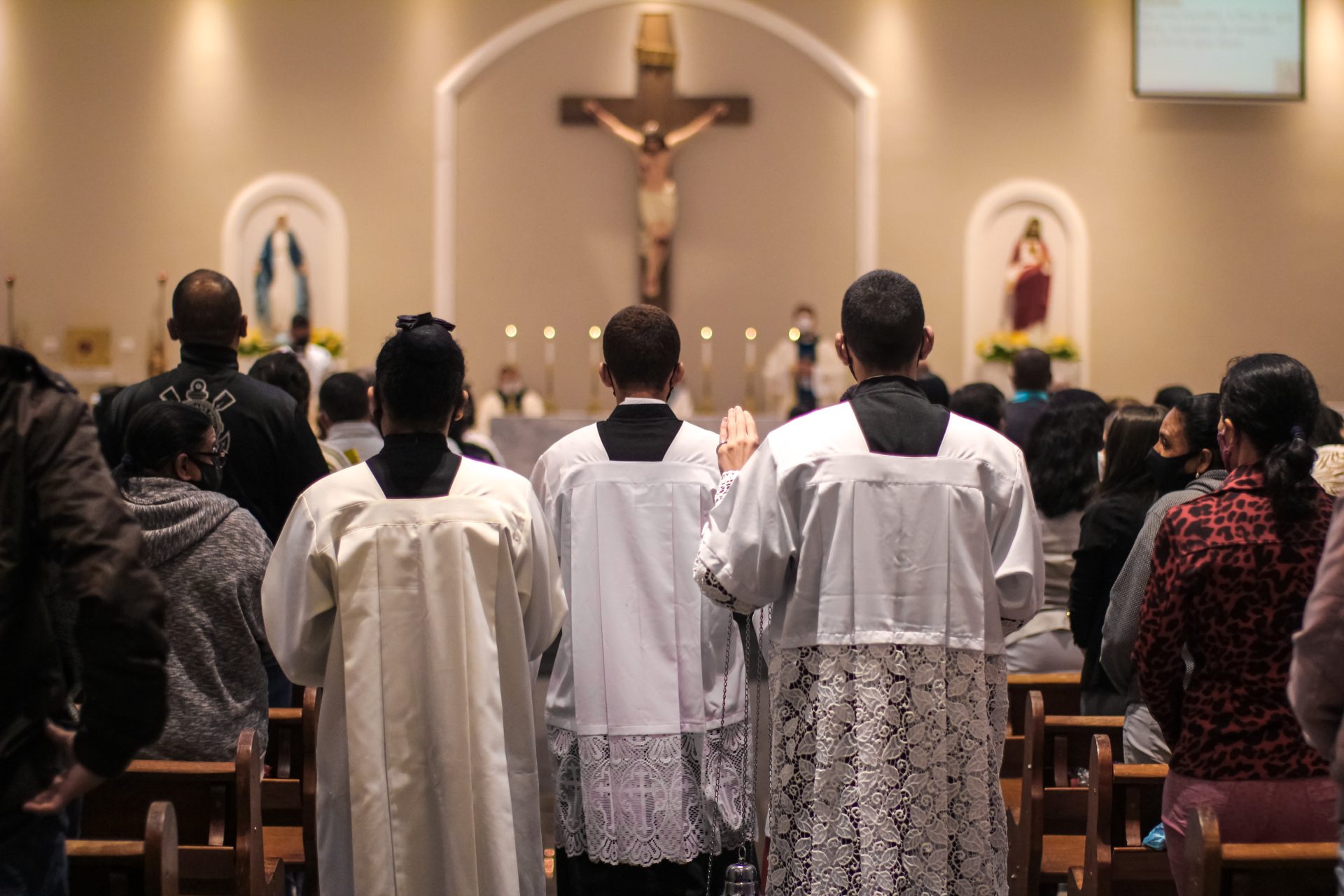
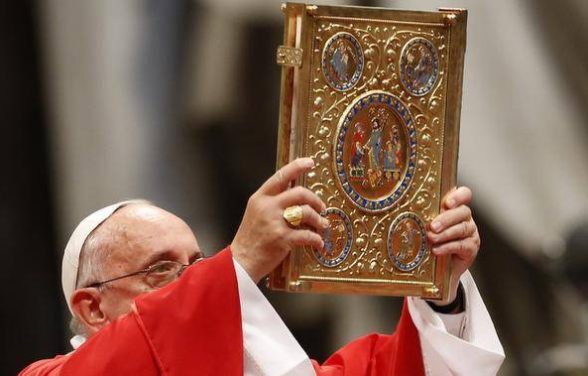
Liturgy of the Word
In the Liturgy of the Word, we proclaim Scripture multiple times. For most of the year this will include a passage from the Old Testament, Psalms, and the Gospel, which is the height of this rite. During Sundays, we also read a New Testament letter. By listening to the Word of God, we are invited to hear and meditate on the mystery of Christ and our salvation. After these readings is the homily, where the priest instructs us on the readings and how we can apply them to our lives in order to live more fully in the life of Christ. Following the homily is the Nicene Creed, which states what we believe, and then to conclude the Liturgy of the Word is the Prayer of the Faithful, where we are invited to intercede with God for the concerns of the Church and Her people.
Liturgy of the Eucharist
The beginning of the Liturgy of the Eucharist is the preparation of the gifts, the bread and wine which will become the Body and Blood of Christ, and the preparation of the altar. The gifts are brought to the altar, the priest blesses and praises God for them, and the Eucharistic Prayer begins, which is the heart of this rite. In this prayer, the priest acting in the person of Christ, gathers the gifts of bread and wine as well as the entire assembly and joins them to the sacrifice of Christ on the Cross, offering them all to the Father. After the Preface, which tells God’s actions throughout history, and the epiclesis, which is the calling upon of God the Father to send the Holy Spirit to change the bread and wine into Christ’s Body and Blood, is the institution narrative and consecration.

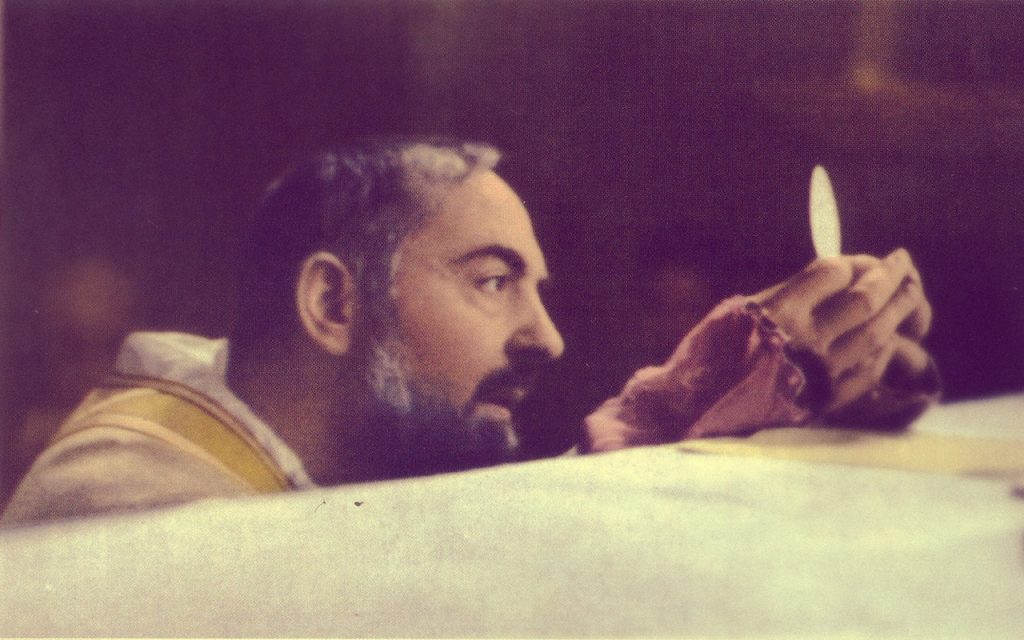
At this point the prayers of the priest recall the night before Jesus’ death at the Last Supper and through the words of consecration by the priest and the action of the Holy Spirit, the simple bread and wine become the Body and Blood of Christ. We recall the saving actions of Christ and join the sacrifice which was offered on the cross back to the Father in thanksgiving. The final portion of the prayer is for intercessions, specifically for those gathered and on behalf of the living, the dead, and the whole Church, and concludes with the concluding doxology, giving glory to the Holy Trinity. After this the assembly prays the Lord’s Prayer, offers each other a sign of peace, prays once more for God’s mercy and peace, and prepares themselves to receive Christ in the Eucharist. In receiving the Eucharist, we firmly believe all which the Church teaches. Those who are in a state of mortal sin or not members of the Church are asked not to receive Communion. After reception of the Eucharist, we should spend some time in silent prayer and thanksgiving.
Concluding Rite
After the silent prayer, the priest prays the prayer after communion, gives the people God’s blessing and dismisses us to go forth and proclaim the Good News of Christ. The Mass then ends with a celebratory song.
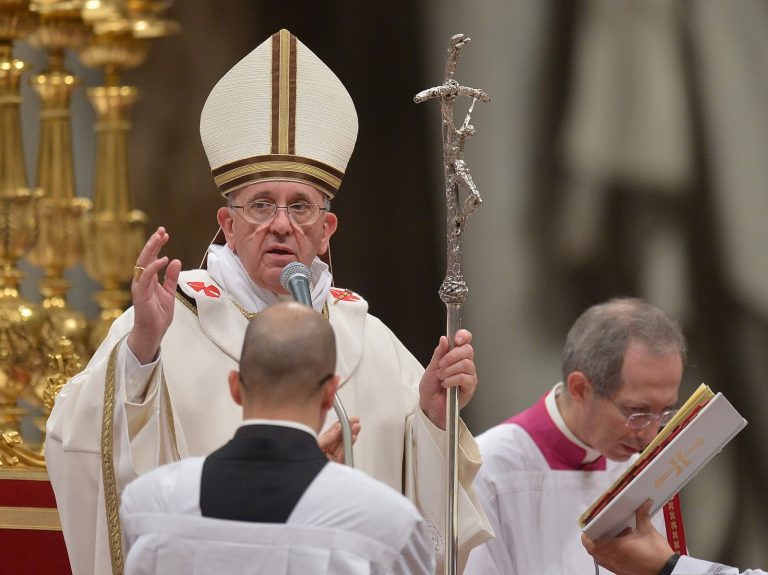
“Man should tremble, the world should quake, all Heaven should be deeply moved when the Son of God appears on the altar in the hands of the priest.”
-Saint Francis of Assisi

